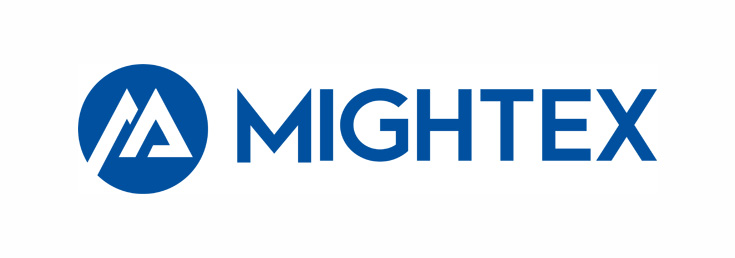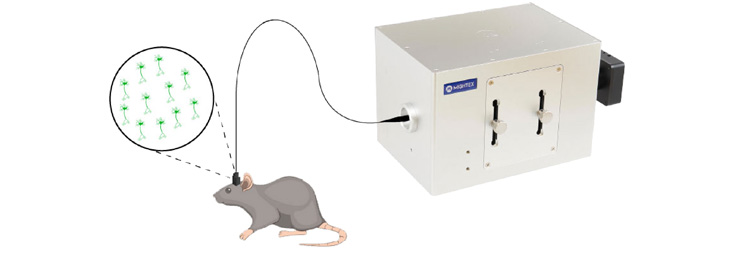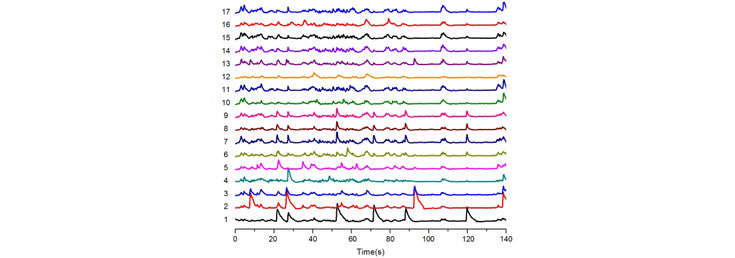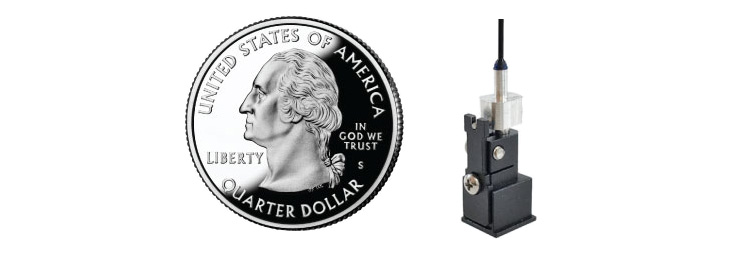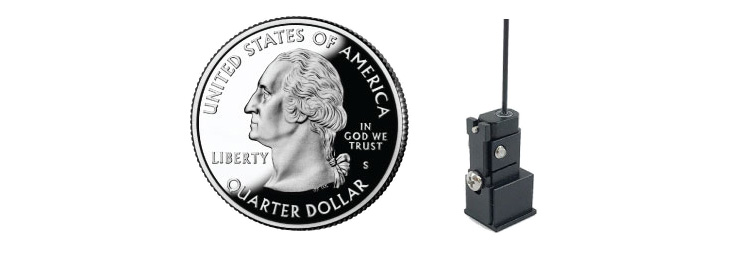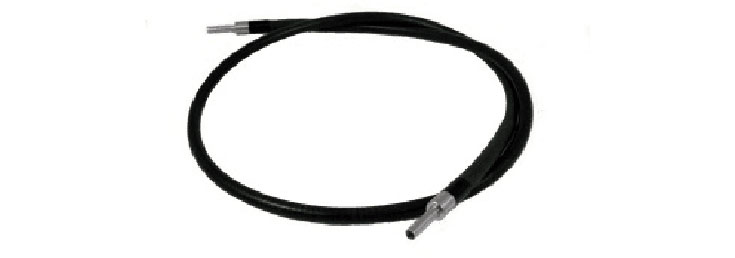 Liquid Lightguides
Liquid Lightguides
Accessories for Mightex Lightguide Coupled and Collimated LED’s
- LLG-03-59-300-0650-1: Liquid lightguide, 3 mm core, 0.59 NA, 300-650 nm, 1 meter (ferrule diameter: 5 mm).
- LLG-03-59-300-0650-2: Liquid lightguide, 3 mm core, 0.59 NA, 300-650 nm, 2 meters (ferrule diameter: 5 mm).
- LLG-03-59-340-0800-1: Liquid lightguide, 3 mm core, 0.59 NA, 340-800 nm, 1 meter (ferrule diameter: 5 mm).
- LLG-03-59-340-0800-2: Liquid lightguide, 3 mm core, 0.59 NA, 340-800 nm, 2 meters (ferrule diameter: 5 mm).
- LLG-03-59-420-2000-1: Liquid lightguide, 3 mm core, 0.59 NA, 420-2000 nm, 1 meter (ferrule diameter: 5 mm).
- LLG-03-59-420-2000-2: Liquid lightguide, 3 mm core, 0.59 NA, 420-2000 nm, 2 meters (ferrule diameter: 5 mm).
- LLG-05-59-340-0800-1: Liquid lightguide, 5 mm core, 0.59 NA, 340-0800 nm, 1 meter (ferrule diameter: 7 mm).
- LLG-05-59-420-2000-1: Liquid lightguide, 5 mm core, 0.59 NA, 420-2000 nm, 1 meter (ferrule diameter: 7 mm).
- LLG-05-59-420-2000-2: Liquid lightguide, 5 mm core, 0.59N A, 420-2000 nm, 2 meter (ferrule diameter: 7 mm).
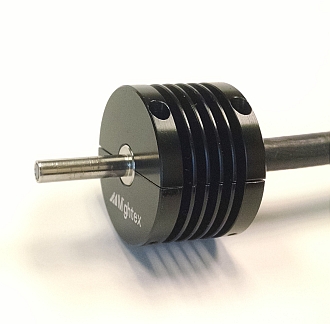
ACC-LLG-HS-03
ACC-GCS-C05: Electrical cable for GCS-series LED’s.
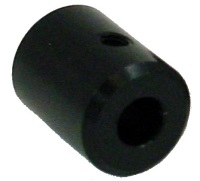
Lightguide adapters for Type-A GCS source ONLY. Each Type-A GCS product comes with a standard lightguide adapter for 5mm-diameter ferrule (A0510). Other adapters (as well as additional standard adapters) can be purchased separately, as follows:
- ACC-GCS-A0510: Adapter for a lightguide with ferrule diameter of 5 mm and ferrule length of 10 mm or greater.
- ACC-GCS-A0610: Adapter for a lightguide with ferrule diameter of 6 mm and ferrule length of 10 mm or greater.
- ACC-GCS-A0710: Adapter for a lightguide with ferrule diameter of 7 mm and ferrule length of 10 mm or greater.
- ACC-GCS-A0810: Adapter for a lightguide with ferrule diameter of 8 mm and ferrule length of 10 mm or greater.
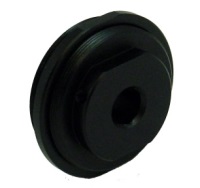
- ACC-GCS-A0515, Adapter for lightguide with ferrule diameter of 5 mm and ferrule length of 15 mm or greater, for Type-B GCS only.
- ACC-GCS-A0715, Adapter for lightguide with ferrule diameter of 7 mm and ferrule length of 15 mm or greater, for Type-B GCS only.
- ACC-GCS-A0815, Adapter for lightguide with ferrule diameter of 8 mm and ferrule length of 15 mm or greater, for Type-B GCS only.
- ACC-GCS-A1015, Adapter for lightguide with ferrule diameter of 10 mm and ferrule length of 15 mm or greater, for Type-B GCS only.
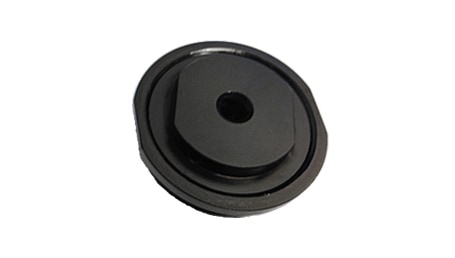
Lightguide Holder GCS-LGH-B-0515, used to replace the collimating lens on a Type-B LCS in order to convert it to a Type-B GCS. For lightguide with ferrule diameter of 5 mm (typical 3 mm-core light guide) and ferrule length of 15 mm or greater.
Lightguide collimators:
Lightguide collimators are used to either couple light from free space into a lightguide or collimate light from a lightguide to form a collimated (parallel) optical beam. Lightguide collimators are key components with numerous applications. For example, a lightguide collimator can project light from a lightguide into a uniform spot in free space.
High-numerical-aperture aspherical lenses are used for precise collimation and maximum light throughput. The collimator features adjustable focus from ~100mm to infinity. Various lightguide ferrule diameters are supported. Customization is available for other ferrule diameters.
The full field of view (FOV) or full divergence angle can be calculated as FOV = 2atan(D/2f), where D is the lightguide core diameter and f is the focal length of the lens. Alternatively, the linear field of view on an object placed at a distance L away from the collimator is D(L/f).
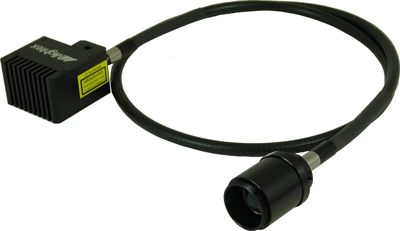
Cables
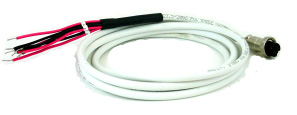
- ACC-FCS-C05: cable for (1) FCS-series fiber-coupled LED light sources; (2) WLS-series WheeLED Wavelength-Switchable LED Sources; (3) FFC-series Fiber-Coupled LED Light Sources; and (4) GCS-series Light Guide Coupled LED Sources.
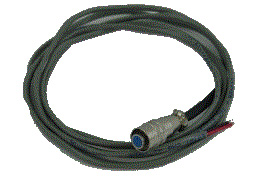
- ACC-FCS-C05-BLS: cable for FCS-, FFC-, GCS-, and WLS-series LED light sources. With push-pull connectors on both ends for connecting to BLS- controllers.
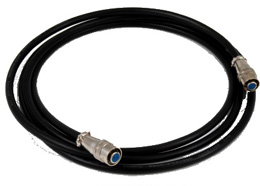
- ACC-WFC4-C05: cable for 4-channel WFC-series LED sources.
- ACC-WFC4-C05-BLS: cable for 4-channel WFC- light sources. With 4 push-pull connectors for connecting to BLS- controllers.
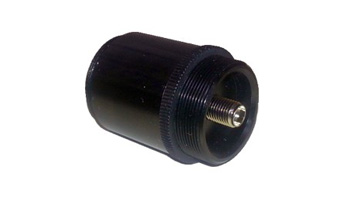
A fiber-optic adapter can be used to couple light from a collimated LED source (22-mm aperture) into a fiber patchcord:
- LCS-FPC-ADP-SMA: Fiber-optic adapter for coupling LCS series LEDs (22-mm aperture) into a fiber patchcord. Accepts SMA connectorized fiber patchcords.
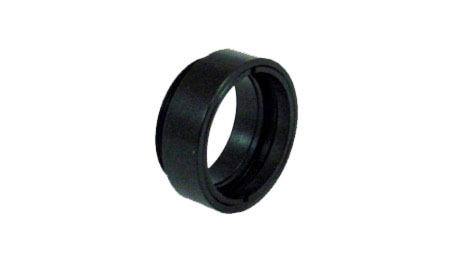
Installation Drawings:
- Installation drawing for ACC-LCS-EH (.pdf file, 32 kB, at Manufacturer's website)
- Installation drawing for ACC-LCS-H-22 (.pdf file, 32 kB at Manufacturer's website)
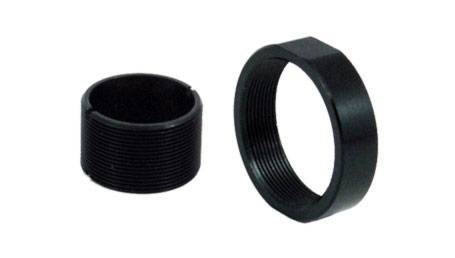
- ACC-LCS-CMM: Male to Male C-Mount connector with inner threads
- ACC-LCS-CFF: Female to Female C-Mount connector with outer threads.
- ACC-LCS-22-T15: 15mm extension tube for 22-mm clear-aperture LCS light sources.
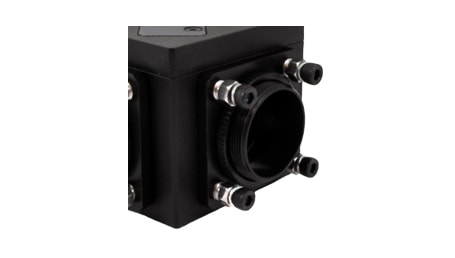
P/N: ACC-LCS-BC25-PPM.

Model: ACC-BC25-011.
Currently, Mightex’s multi-wavelength beam combiners can only be used to DIRECTLY combine 22mm-diameter Collimated LED Sources. For 11mm-diameter collimated LED sources, (as shown below) a mechanical adapter (P/N: ACC-BC25-011) can be used to attach the LED sources to the beam combiners, before the 11-mm diameter collimated LED sources can be combined.
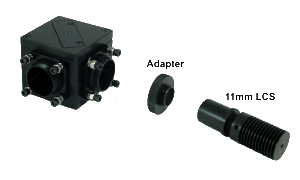
parts
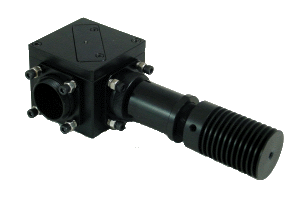

Model: ACC-LCS-27C
IMPORTANT : (1) LED’s can ONLY be driven by a constant-current source, and NOT a voltage source (e.g. a battery, or a AC/DC power supply etc.); (2) Please always verify LED’s current rating first before applying current to the LED, and please always make sure NOT to apply current that is above the LED’s current rating.
About Mightex High Power LED Light Sources
Selecting a Microscopy LED Light Source
1. Select LED Wavelength
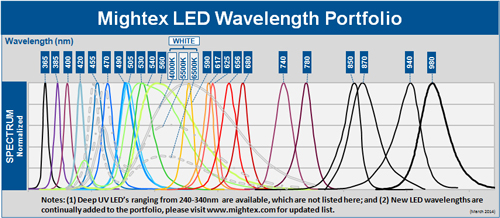
2. Select LED Configuration
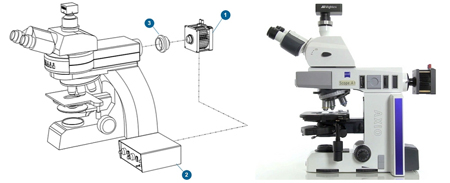
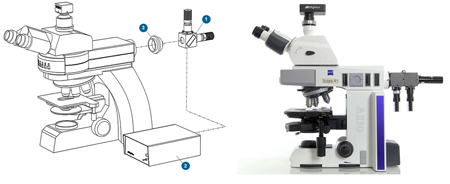
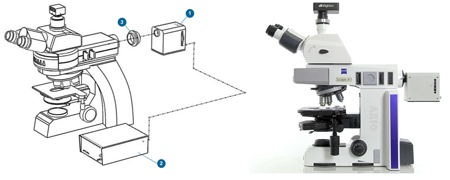
3. Select LED Controller
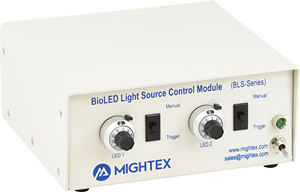
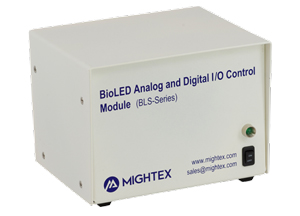
4. Microscope Coupling
Microscope adapters are available for all major manufacturers (Nikon, Olympus, Leica, Zeiss). If you have a different microscope, please contact us.

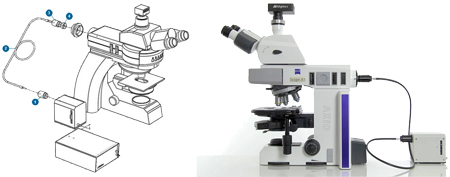
LED Application Examples
Abdelfattah AS et al., Bright and Photostable Chemigenetic Indicators for Extended In Vivo Voltage Imaging – Science (2019)
Abdelfattah et al., developed novel chemigenetic indicators for in vivo voltage imaging in neurons. To illuminate their indicators, the group used Mightex’s Microscope LEDs.
Crandall SR, et al., Infrabarrels Are Layer 6 Circuit Modules in the Barrel Cortex that Link Long-Range Inputs and Outputs – Cell Reports (2017)
In this work, Crandall et al., used Mightex’s Microscope LEDs to optically stimulating different neuronal pathways connecting to pyramidal neurons found in L6 of the whisker somatosensory cortex of mice.
Higgs MH, Measurement of Phase Resetting Curves Using Optogenetic Barrage Stimuli – Journal of Neuroscience Methods (2017)
To study phase resetting curves in vivo, Higgs and Wilson used Mightex’s Microscope LEDs to establish whether their novel method of optogenetic barrage stimulation would work during extracellular spike recordings (a recording method often used in in vivo experiments).
Also See:

